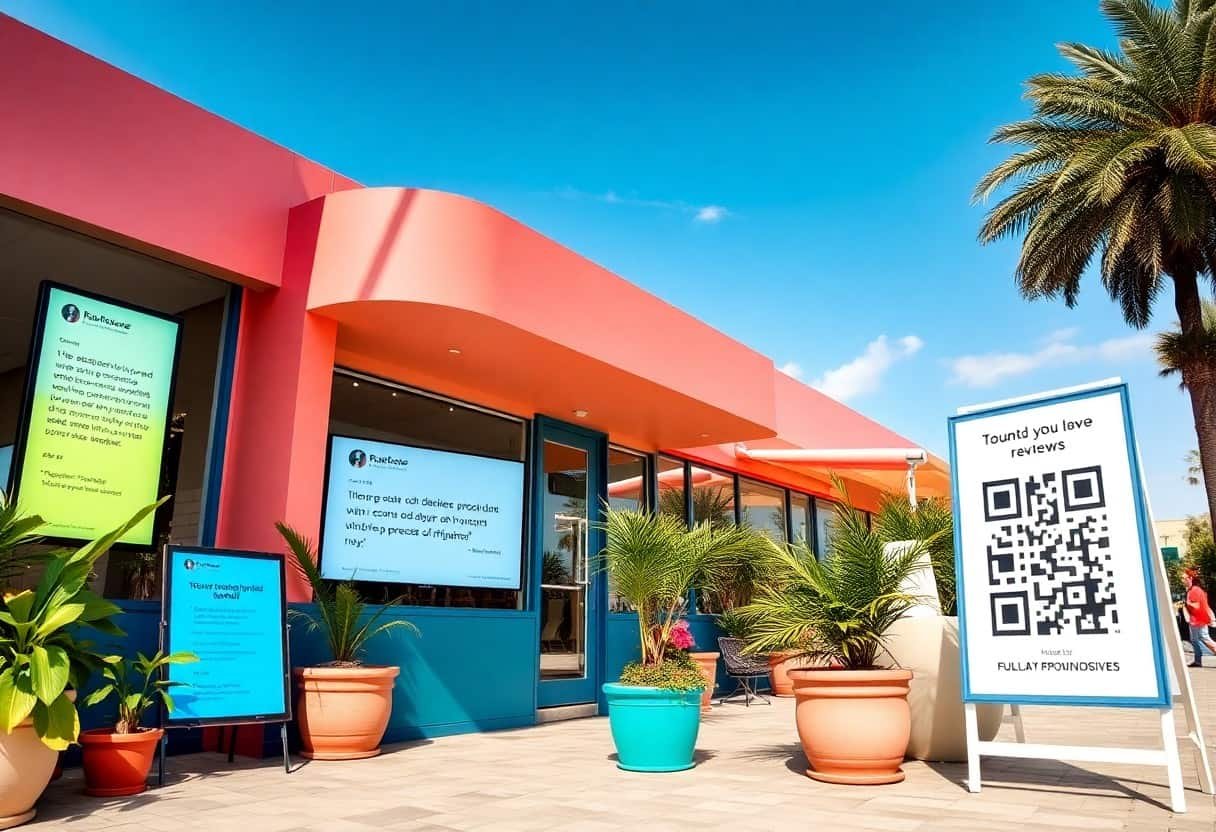Many businesses struggle with garnering reviews across various platforms, yet diversifying your customer feedback can significantly impact your online reputation. To achieve this, you need a strategic approach that motivates your customers to share their experiences wherever they feel comfortable. By implementing effective tactics and utilizing the right tools, you can facilitate and encourage more reviews, enhancing your visibility and trustworthiness in the market.

Key Takeaways:
- Offer incentives such as discounts or loyalty points for leaving reviews on various platforms.
- Make the review process easy by providing direct links to each platform in post-purchase emails.
- Follow up with customers through personalized messages, expressing gratitude and encouraging reviews on multiple sites.
The Psychology Behind Customer Feedback
Understanding the psychology behind customer feedback reveals how you can motivate your customers to share their experiences. Customers often derive satisfaction from sharing their opinions, creating a sense of connection with the brand. Positively reinforcing their behavior by acknowledging their contributions can enhance this psychological phenomenon and encourage further engagement on different platforms.
Understanding Motivations for Leaving Reviews
Customers typically leave reviews to express satisfaction, provide constructive criticism, or help others make informed decisions. Social validation plays a vital role; when they see their opinions valued, it fosters loyalty and repeat transactions. Some might even seek recognition within a community, encouraging them to share their thoughts on multiple platforms.
Addressing Common Hesitations
Many customers hesitate to leave reviews due to concerns about time, complexity, or fear of negative repercussions. You can alleviate these fears by simplifying the review process and ensuring that feedback, whether positive or negative, is welcomed. Highlighting the minimal time investment can lead to higher participation rates.
Addressing these common hesitations involves offering incentives, such as discounts or loyalty points, and ensuring the review process is straightforward, requiring only a few clicks. Emphasizing that their feedback is valued, regardless of its nature, can alleviate concerns about backlash. Provide clear instructions and multiple platforms for submitting reviews, enhancing user confidence in the process.

Crafting a Stellar Customer Experience
Creating a stellar customer experience is the foundation for encouraging reviews. Every touchpoint, from initial contact to post-purchase follow-up, should be seamless and enjoyable. Your goal is to make customers feel valued and appreciated, which increases the likelihood of them sharing their positive experiences on multiple platforms. Personalization and attention to detail can significantly enhance customer satisfaction, prompting them to spread the word about your brand.
Creating Memorable Interactions
Focus on crafting memorable interactions by going beyond the basic requirements of service. Pay attention to individual preferences and offer personalized recommendations. A thoughtful gesture, such as a handwritten thank-you note or a small surprise gift, showcases your commitment to customer satisfaction. These moments not only resonate deeply with customers but also make them more inclined to leave glowing reviews across various platforms.
The Role of Follow-Up Communication
Following up after a purchase is critical in reinforcing the customer experience. A quick message thanking them for their business can solidify a positive impression and remind them of their choice to engage with your brand. This proactive approach can effectively encourage reviews, emphasizing that you value their opinions and are genuinely interested in their feedback.
After the sale, sending a follow-up message can greatly influence a customer’s willingness to leave a review. A study revealed that personalized follow-ups can boost review rates by up to 30%. Use this opportunity to express appreciation for their support and invite them to share their thoughts on their experience. Offering a simple link to review sites can streamline the process, making it easy for them to contribute to your online presence. This thoughtful engagement strengthens their connection with your brand, turning satisfied customers into advocates.
Strategizing Platform Selection
Selecting the right platforms for customer reviews is important for maximizing your online visibility. You need to prioritize platforms where your target audience is most active. Consider factors such as industry relevance, user demographics, and the type of products or services you offer. For instance, if you operate a restaurant, platforms like Yelp and Google Reviews might be your best bet, while a tech company might find value on G2 or Capterra.
Identifying Key Review Platforms for Your Business
Focus on identifying platforms that align with your business goals and target demographics. Research where your competitors are receiving reviews and gauge customer interactions on those platforms. Use online tools and analytics to assess which sites generate the most traffic for your industry, ensuring you concentrate your efforts strategically to enhance your online presence.
Tailoring Requests for Each Platform
Approach each platform with a tailored request to encourage reviews. Different platforms have unique audiences and engagement styles, so customize your outreach accordingly. For example, a friendly email might work well for personalized requests on a niche platform, while a short, direct message on social media may resonate better with a broader audience on a large platform.
Personalizing your requests for each platform increases the likelihood of receiving positive reviews. On professional sites like LinkedIn, emphasize your collaboration and mutual benefit in the request, while on others like Yelp, highlight specific customer experiences. Crafting your message to fit the tone and culture of the platform reflects your understanding of customer preferences, fostering a connection that encourages customers to engage and share their thoughts.
Incentivizing Reviews without Manipulating Trust
Encouraging reviews can easily tip into unethical territory if not approached carefully. You can create a positive influence by cultivating a culture of openness and appreciation without compromising trust. Avoid offering incentives that dictate review outcomes, as this may lead customers to question the authenticity of your brand. Instead, focus on fostering genuine relationships that inspire honest feedback across multiple platforms, ultimately enhancing your credibility.
Offering Genuine Rewards
Providing real rewards for feedback encourages customers to share their experiences without compromising integrity. Select rewards that resonate with your audience, such as discounts, exclusive access to new products, or loyalty points. For instance, if you run a coffee shop, offering a free drink after a review on a specific platform can increase participation while making customers feel valued and appreciated.
Balancing Incentives with Authenticity
Creating a balance between incentivizing reviews and maintaining authenticity is key to successful feedback strategies. Ensure your rewards do not create the expectation of favorable reviews. Instead, position them as tokens of appreciation for taking the time to share honest experiences, reinforcing your commitment to customer opinions genuinely.
Balancing incentives with authenticity involves transparent communication. Clearly state that rewards are offered for sharing candid feedback, regardless of whether it’s positive or negative. This approach conveys respect for your customers’ views and demonstrates that you value their input, which can lead to more thoughtful and honest reviews. A study found that businesses emphasizing authenticity in their interactions saw a 20% increase in review volume, proving that customers respond positively to genuine engagement.
Engaging with Feedback: Building Community and Trust
Encouraging customer feedback goes beyond just gathering reviews; it’s about fostering a trustworthy community. Engaging with feedback, whether positive or negative, shows your customers that their opinions matter. This reciprocity builds stronger relationships and cultivates loyalty, leading to more enthusiastic and frequent reviews. By actively participating in conversations, you establish a more transparent brand image that resonates with your audience, creating an inviting environment where customers feel appreciated and valued.
Responding to Reviews Effectively
Your response to reviews can significantly influence future customer decisions. Engage with both positive and negative feedback by thanking reviewers for their input and addressing concerns thoughtfully. Quick responses demonstrate your commitment to customer satisfaction, encouraging others to share their experiences. Tailor your replies to reflect a genuine tone while reinforcing your brand’s values, creating an approachable persona that resonates with your audience.
Showcasing Reviews Across Platforms
Utilizing reviews from different platforms effectively can amplify your brand visibility. Share standout testimonials on your website, social media, and marketing campaigns, ensuring potential customers see positive feedback from various sources. This strategy not only highlights customer approval but also builds trust as prospects view diverse opinions about your products or services.
Showcasing reviews across platforms can involve integrating user-generated content into your marketing. For instance, sharing Instagram posts where customers proudly display their purchases or embedding Yelp reviews directly on your website creates a dynamic experience. Using tools to aggregate reviews can streamline this process, ensuring your best testimonials are always spotlighted. You might also consider featuring a “review of the week” to maintain engagement and encourage new submissions while showing appreciation for your loyal customers.
Summing up
From above, you can encourage customers to leave reviews on multiple platforms by actively engaging with them throughout their experience. Offer incentives, such as discounts or loyalty points, for leaving reviews. Simplify the process by providing direct links to your profiles on various platforms. Regularly remind customers through follow-up emails or messages, making sure to personalize your requests. Highlight the importance of their feedback and how it helps improve your services, fostering a sense of community and collaboration with your brand.
FAQ
Q: Why should I encourage customers to leave reviews on multiple platforms?
A: Encouraging customers to leave reviews on various platforms increases visibility for your business, enhances your online reputation, and provides you with valuable feedback from different customer segments.
Q: What are effective strategies to motivate customers to leave reviews across different sites?
A: You can offer incentives, such as discounts or loyalty points, after a review is submitted. Additionally, follow up with customers via email, thanking them for their purchase and gently requesting a review on platforms like Google, Yelp, or social media.
Q: How can I simplify the review process for my customers?
A: Provide direct links to your review profiles in follow-up emails and on your website. Make the review process straightforward by including clear instructions on how to leave a review, and ensure that the platforms you choose are user-friendly.

